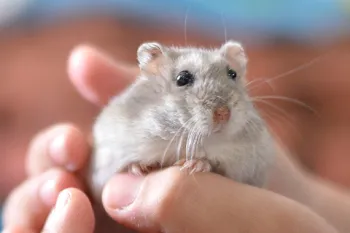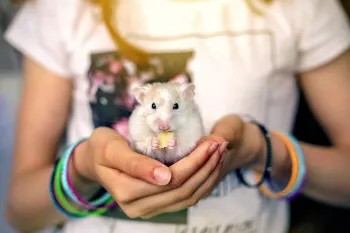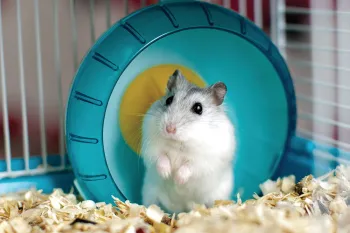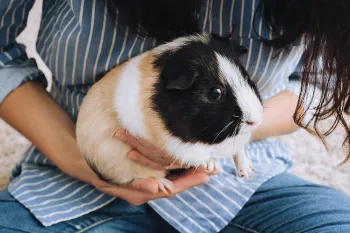Hamsters vs. Gerbils: What’s the Difference?
One important difference when choosing a small pet: hamsters are nocturnal, while gerbils are active during the day. This means your hamster will be most active at night. So that is something to consider if you’re a light sleeper or hoping for daytime companionship.
What to Know Before Getting a Hamster
1. Are You a Night Owl?
Hamsters are most active after dark. If you’re a night owl, a hamster can be a fun, interactive companion in the late hours. However, their nighttime activity — including wheel running and cage chewing — might disturb light sleepers.
If you’re rarely home in the evening or work overnight shifts, a hamster may not be the right fit.
2. Don't shop, save a life
Avoid pet store hamsters, as they’re often bred in poor conditions and prone to health issues like wet tail, a contagious and serious diarrheal disease. Whenever possible, adopt from a local animal shelter or small animal rescue.
3. Health Risks to Consider
While hamsters are generally low-risk pets, they can carry:
- Salmonella
- Campylobacter
- Lymphocytic choriomeningitis (LCM)
These zoonotic diseases can pose a serious risk to:
- Pregnant women
- Young children under 5
- People with weakened immune systems
Always practice good hygiene and supervise children around small animals.
4. Are Hamsters Good Pets for Kids?
Despite their small size, hamsters aren’t ideal pets for very young children. They:
- Wake up at night, when kids are asleep
- Are easily startled by sudden movements
- Can bite if handled roughly or awakened from sleep
Children under 8 years old often lack the motor skills and self-control to handle hamsters safely. Always supervise interactions to keep both your child and pet safe.

StratosGiannikos/iStock.com

Sol de Zuasnabar Brebbia
5. Space & Habitat Requirements
Syrian hamsters are territorial and must live alone. Keeping them together can lead to serious fights. Dwarf hamsters may cohabitate if introduced properly, though they still need adequate space.
Recommended hamster habitat:
- Minimum 20-gallon tank or wire cage per hamster
- Secure, escape-proof enclosure
- Bedding for burrowing (paper-based is ideal)
- Exercise wheel and chew toys
6. Budgeting for a Hamster
While adoption fees are usually low, plan for initial and ongoing expenses.
Upfront costs may include:
- Habitat ($50–$100)
- Bedding and nesting material
- Food dish and water bottle
- Exercise wheel
- Chew toys and treats
Annual expenses for food, bedding, and veterinary care typically range from $150–$300.
7. Time Commitment
Hamsters are relatively independent but still require:
- Daily interaction for socialization
- Weekly cage cleaning
- Spot cleaning and food/water changes every day
Most hamsters live 1.5 to 3 years, making them a short-term commitment — something to consider if introducing pets to young children.
8. Important Legal Note: Hamsters in Hawai’i
Hamsters are illegal in Hawai’i due to environmental concerns. The tropical climate could allow escaped hamsters to form wild colonies, threatening native ecosystems. Always check local pet regulations before adopting.
Final Thoughts: Is a Hamster Right for You?
A hamster can be a great pet for night owls, experienced pet owners, and those looking for a small, entertaining companion. However, they’re not the best match for young children or anyone seeking a daytime buddy.



